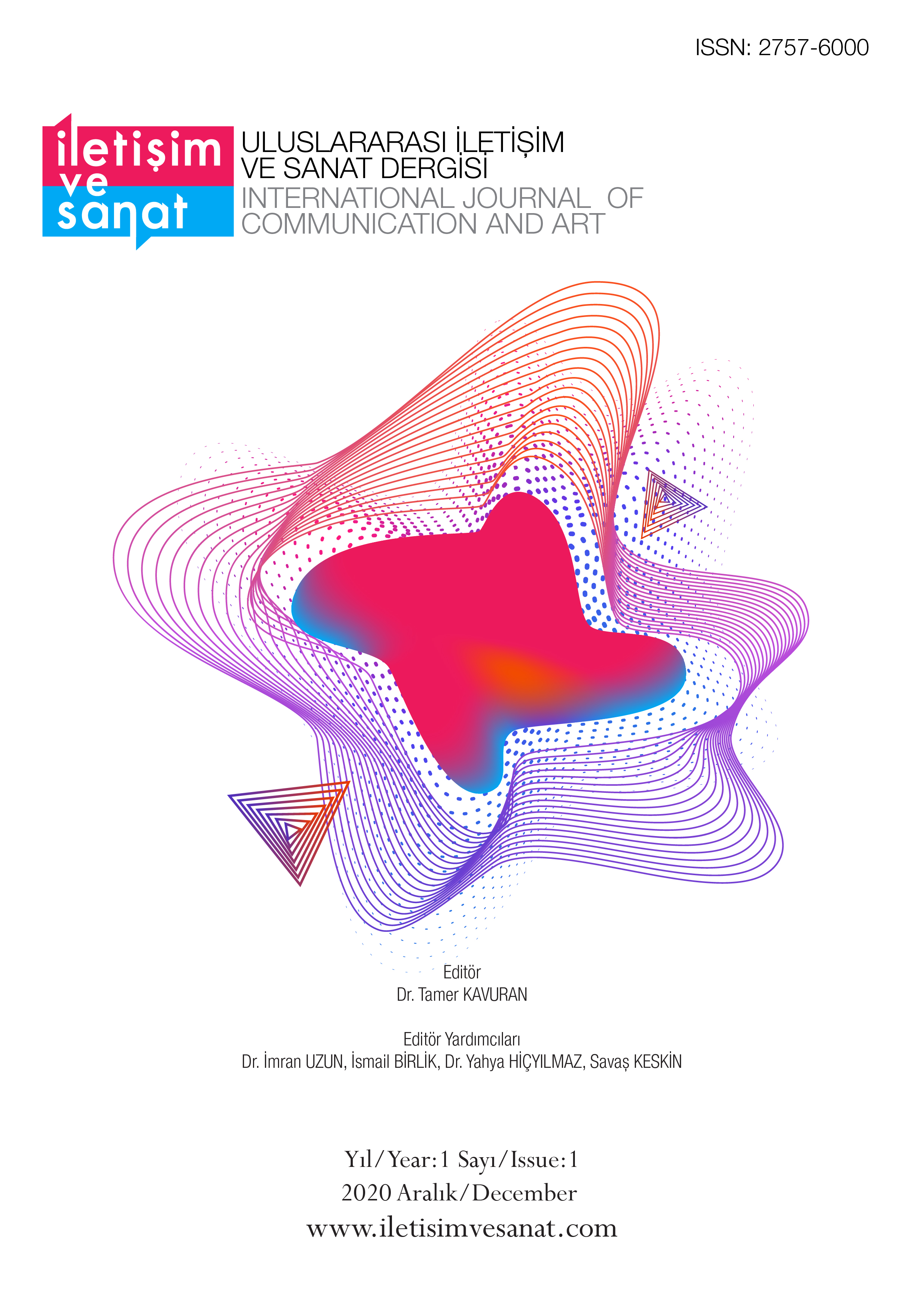Author :
Abstract
- yy.’ın ilk çeyreğinde artan bilimsel ve teknolojik gelişmeler insanın içinde bulunduğu durumu yansıtabilmek için kullandığı ifade biçimlerinde farklı bakış açıları geliştirmesini sağladı. Özellikle ikinci dünya savaşı sonrasında hızlı bir değişime giren dünya halkları içinde bulundukları kaotik durumu, geliştirdikleri düşünce akımları ve teknik gelişmelerle aşmayı başardılar. Sanatçılar içinde bulundukları kaotik durumu fikir ve sanat eserlerine dönüştürmek için fotoğraf ve türevlerine yöneldiler, fırça yerini elektronlara ve fotonlara bıraktı. Görece uygulanması daha basit görülerek dışlatılmak istense de sanatçıların dehaları ile birlikte yüz yıl gibi bir süreçte vazgeçilmez birer sanat nesnelerine dönüştüler.
1839 yılı itibarı ile bahsedilmeye başlayan fotoğraf onu takip eden yıllarda geliştirilen yeni görüntüleme teknikleri ile hem bilim hem de sanat dünyasına kapılar açmış oldu. X ışınlarının keşfi ardından elektron ışımasının karakterize edilebilmesi çıplak gözle görülemeyecek kadar küçük olan nesnelere bu yöntemler ile ortaya çıkarılabilmesini sağladı. Hayranlık uyandıracak derecede şekil, renk ve dokuların ortaya konulması sanatçıların ilgisini bu yapılar üzerinden ifade biçimleri oluşturmasına itmiştir. Estetikte yeni arayışlara giren Tyurina sanat pratiklerini elektron mikrografileri üzerine yoğunlaştırmıştır. Suyun doğası üzerinde elektron mikrografik tanımlamalarda bulunarak yaptığı çalışmanın bilimsel birer üretim olmasından ziyade bilimsel elektron mikrografiye estetik bir yaklaşım getirmiştir.
Bu makalede elektron mikrografi kavramının tarihsel gelişim süreci ve bu alanda yapılan uygulamalar araştırılmıştır. İlk mikroskobun gelişimi yapılan mikrografiler tanımlanmış daha sonra fotoğrafın icadı ile fotomikrografinin üzerine yapılan çalışmalar değerlendirilmiştir.
Keywords
Abstract
Increasing scientific and technological developments in the first quarter of the 19th century enabled people to develop different perspectives in the forms of expression they use to reflect the situation they are in. The peoples of the world, who went through a rapid change especially after the second world war, managed to overcome the chaotic situation they were in, with the currents of thought and technical developments they developed. The artists turned to photography and its derivatives in order to transform their chaotic situation into ideas and works of art. The brush gave way to electrons and photons. Although it is wanted to be excluded by seeming relatively simple to apply, they have turned into indispensable art objects in a period of a century with the genius of the artists.
Photography, which started to be mentioned as of 1839, opened doors to both the science and art world with the new imaging techniques developed in the following years. Following the discovery of X-rays, the characterization of electron radiation enabled these methods to reveal objects too small to be seen with the naked eye. The revealing of shapes, colors and textures in an admirable degree has led the artists to create expressions through these structures. Entering new searches in aesthetics, Tyurina focused her art practices on electron micrographs. His work by making electron micrographic definitions on the nature of water has brought an aesthetic approach to scientific electron micrography rather than being a scientific production.
In this article, the historical development process of the electron micrography concept and its applications in this field have been investigated. The micrographs of which the first microscope was developed were defined, and then the invention of photography and the studies on photomicrography were evaluated.
Keywords
- Berger, J. (2019). Görme Biçimleri. Yurdanur Salman (Çev.). İstanbul: metis.
- Berger, J. (2019). Görme Biçimleri. Yurdanur Salman (Çev.). İstanbul: metis.
- Bodei, R. (2008). Güzelin Biçimleri. Durdu Kundakçı (Çev.). Ankara: Dost Kitapevi.
- Freud, S. (2014). Sanat ve Sanatçılar Üzerine. Kâmuran Şipal (Çev.). İstanbul: Yapı Kredi.
- Gombrich, E.H. (2009). Sanatın Öyküsü. Erol Erduran, Ömer Erduran (Çev.). İstanbul: Remzi Kitabevi.Hall, S. (2017). Temsil Kültürel Temsiller ve Anlamlandırma Uygulamaları. İdil Dündar (Çev.). İstanbul: Pinhan.
- Kozlu, D. (2009) Teknolojik Gelişmelerin Toplum ve Sanata Yansımaları, Süleyman Demirel Üniversitesi Güzel Sanatlar Fakültesi Hakemli Dergisi. Vol. 3.
- Lawson, D. (1963). The Aesthetıc and Pıctorıal Applıcatıons of Photomıcrography. The Photographıc Journal, Vol. 103, pp 1-11.
- Marien, M. W. (2002). Photography: a cultural history. USA:Prentice Hall Press.
- Santos, S. (2015). Crossing borders: the Path of Photomicrography Towards Artistic Recognition. Midas: Online publications. DOI : 10.4000/midas.875.
- Şahiner, R. (2008). Postmodern Kırılmalar ya da Modernin Yapıbozumu. İstanbul: Yeni İnsan.
- Terim Kapakin, K.A. (2006). Scanning- Elektron Mikroskobu. Yeni Yüzyıl Üniversitesi Veterinerlik Fakültesi Derğisi: 17 (1-2):55-58.
- Tunalı, İ. (2014). Sanat Ontolojisi. İstanbul: İnkılap Kitapevi.
- Tyurina A. (2020). Searching for New Aesthetics: Unfolding the Artistic Potential of Images Made bythe Scanning Electron Microscopy. Springer Open, Doi.org/10.1007/978-3-030-42097-0_7, pp103- 119.
- Ziss, A. (2011). Estetik. Yakup Şahan (Çev.). İstanbul: Hayalbaz Kitap. Şekiller





